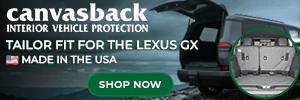humor me before you jump into a response. i know what a hub centric wheel is supposed to be. the OEM wheels are supposed to be hub centric. but a A perfect, zero-tolerance fit between a wheel's center bore and the vehicle's hub is practically impossible due to manufacturing tolerances in both parts. hence you are left with the follwing realistic scenarios:
share your thoughts
- wheel bore being slighly bigger ( +/- .0005" is the normal tolerance on machine parts) than the hub- at this point the wheel is no longer sitting on the hub and the lugs will do all the work
- wheel bore bing slightly bigger- the wheel will interfere with the hub and will not sit on the hub
- the wheel is press fit on the hub- they only way to achieve through hub centricity. but we know that is not a possible during wheel installation.
- using a plastic hub ring- this option interestingly is the only way to guarantee fitment as you can press fit the wheel on to the ring with force due to plastic formation of the ring.
share your thoughts





